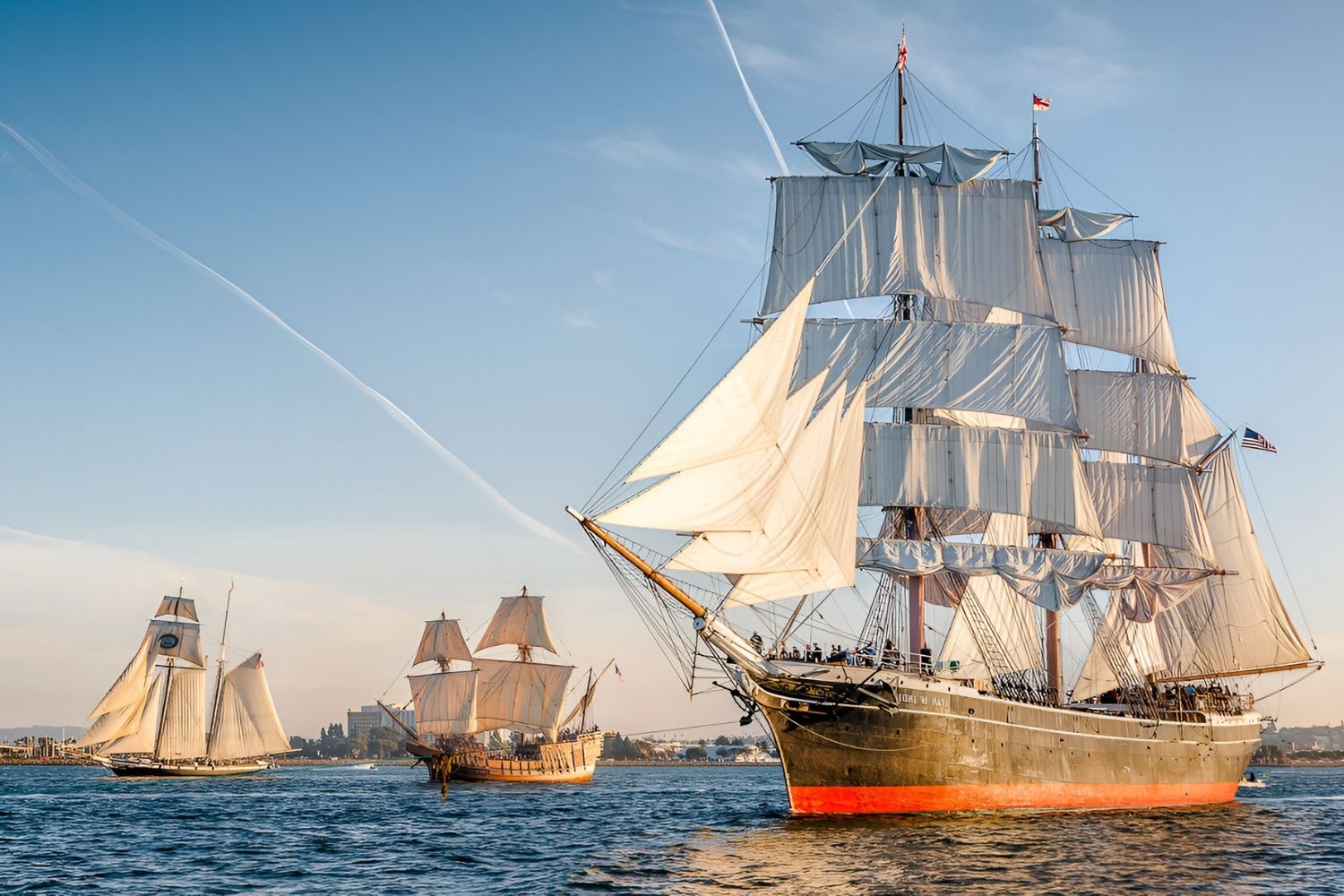
Historic ships have always captured our imagination, sailing through the annals of time with tales of adventure, exploration, and sometimes tragedy. From the majestic Titanic to the legendary Santa Maria, these vessels are more than just wood and sails; they are floating pieces of history. Why do these ships fascinate us so much? They represent human ingenuity, bravery, and the relentless quest for discovery. Whether you're a history buff or just curious, learning about these iconic ships offers a glimpse into the past and the incredible stories they carry. Ready to set sail on this historical voyage? Let's dive into 20 intriguing facts about these maritime marvels.
Key Takeaways:
- The Titanic was a luxurious but tragic ship that sank on its maiden voyage, leading to the loss of over 1,500 lives. It was believed to be unsinkable due to its advanced safety features.
- The Mayflower carried the Pilgrims to the New World in 1620, enduring a harsh 66-day journey. The ship played a crucial role in American history, leading to the signing of the pioneering Mayflower Compact.
The Titanic: A Tragic Legend
The RMS Titanic is one of the most famous ships in history, known for its tragic sinking on its maiden voyage. Here are some fascinating facts about this ill-fated vessel.
- The Titanic was the largest ship afloat at the time of its maiden voyage in 1912, measuring 882 feet in length.
- It was considered unsinkable due to its advanced safety features, including 16 watertight compartments.
- The ship struck an iceberg on April 14, 1912, and sank in less than three hours.
- Over 1,500 passengers and crew members lost their lives in the disaster.
- The Titanic had a gym, swimming pool, libraries, and high-class restaurants, making it a floating luxury hotel.
The Mayflower: Pilgrims' Journey
The Mayflower carried the Pilgrims from England to the New World in 1620. This ship played a crucial role in American history.
- The Mayflower was a merchant ship, not originally intended for passenger transport.
- It carried 102 passengers, known as Pilgrims, seeking religious freedom.
- The journey took 66 days, with harsh weather conditions and cramped living quarters.
- The Mayflower Compact, signed aboard, was a pioneering document of self-governance.
- After the Pilgrims' arrival, the ship returned to England and was eventually dismantled.
The USS Constitution: Old Ironsides
The USS Constitution, also known as "Old Ironsides," is a wooden-hulled, three-masted heavy frigate of the United States Navy.
- Launched in 1797, it is the world's oldest commissioned naval vessel still afloat.
- The ship earned its nickname during the War of 1812 when British cannonballs seemed to bounce off its thick hull.
- It was one of six original frigates authorized for construction by the Naval Act of 1794.
- The USS Constitution defeated five British warships during its service.
- Today, it serves as a museum ship in Boston, Massachusetts.
The Santa Maria: Columbus' Flagship
Christopher Columbus' flagship, the Santa Maria, played a pivotal role in his 1492 voyage to the Americas.
- The Santa Maria was the largest of Columbus' three ships, measuring about 62 feet in length.
- It was a carrack, a type of ship used for long voyages during the Age of Exploration.
- The ship ran aground on Christmas Day in 1492 and was abandoned.
- Columbus used the wood from the Santa Maria to build a fort called La Navidad.
- The Santa Maria's voyage marked the beginning of European exploration and colonization of the Americas.
Sailing Through History
Historic ships have always captured our imagination. From the Titanic's tragic tale to the Mayflower's journey, these vessels tell stories of adventure, discovery, and sometimes disaster. Each ship, whether a warship like the USS Constitution or a merchant vessel like the Cutty Sark, offers a glimpse into the past.
Learning about these ships isn't just about the vessels themselves. It's about understanding the people who built, sailed, and sometimes perished on them. Their stories remind us of human ingenuity, bravery, and the relentless pursuit of exploration.
Next time you see a historic ship, think about the countless lives it touched and the history it represents. These floating museums are more than just relics; they're windows into our shared past. Keep exploring, and who knows what other fascinating facts you'll uncover about these maritime marvels.
Frequently Asked Questions
Was this page helpful?
Our commitment to delivering trustworthy and engaging content is at the heart of what we do. Each fact on our site is contributed by real users like you, bringing a wealth of diverse insights and information. To ensure the highest standards of accuracy and reliability, our dedicated editors meticulously review each submission. This process guarantees that the facts we share are not only fascinating but also credible. Trust in our commitment to quality and authenticity as you explore and learn with us.
